I’m brushing up my French for an upcoming trip and was reminded that Mayday comes from M’Aidez – Help Me. When I started flying in the ’70s the conventional wisdom from the old timers was “whatever you do don’t declare an emergency”. Now that I’m an old timer, the prevailing attitude in my pilot circle is to declare the emergency and get whatever help you can – and you might be surprised at how little follow up you’ll encounter. Engine failure, structural failure, smoke in the cockpit; those are easy. Declare and get the help.
What’s more challenging is when you see something troubling on the engine monitor – but you’re not sure if it’s a real problem or just a sensor acting up. Declaring entitles you to priority handling, and if you declared but it turned out to be nothing more than sensor failure, that would likely be the end of it -unless you had a history of crying wolf when there was no wolf. In your preparation for 91.103 compliance – a.k.a. “all the information about the upcoming flight” – you could review what scenarios would trigger an emergency declaration. It’s a tougher decision in the moment.
We’ll start this month with a Mooney M20J powered by a Lycoming IO – 360 and data from an Insight G3 with a 1 second sample rate. EGTs on top, with CHTs and FF below. Nothing special about cursor replacement – just moving it out-of-the-way.
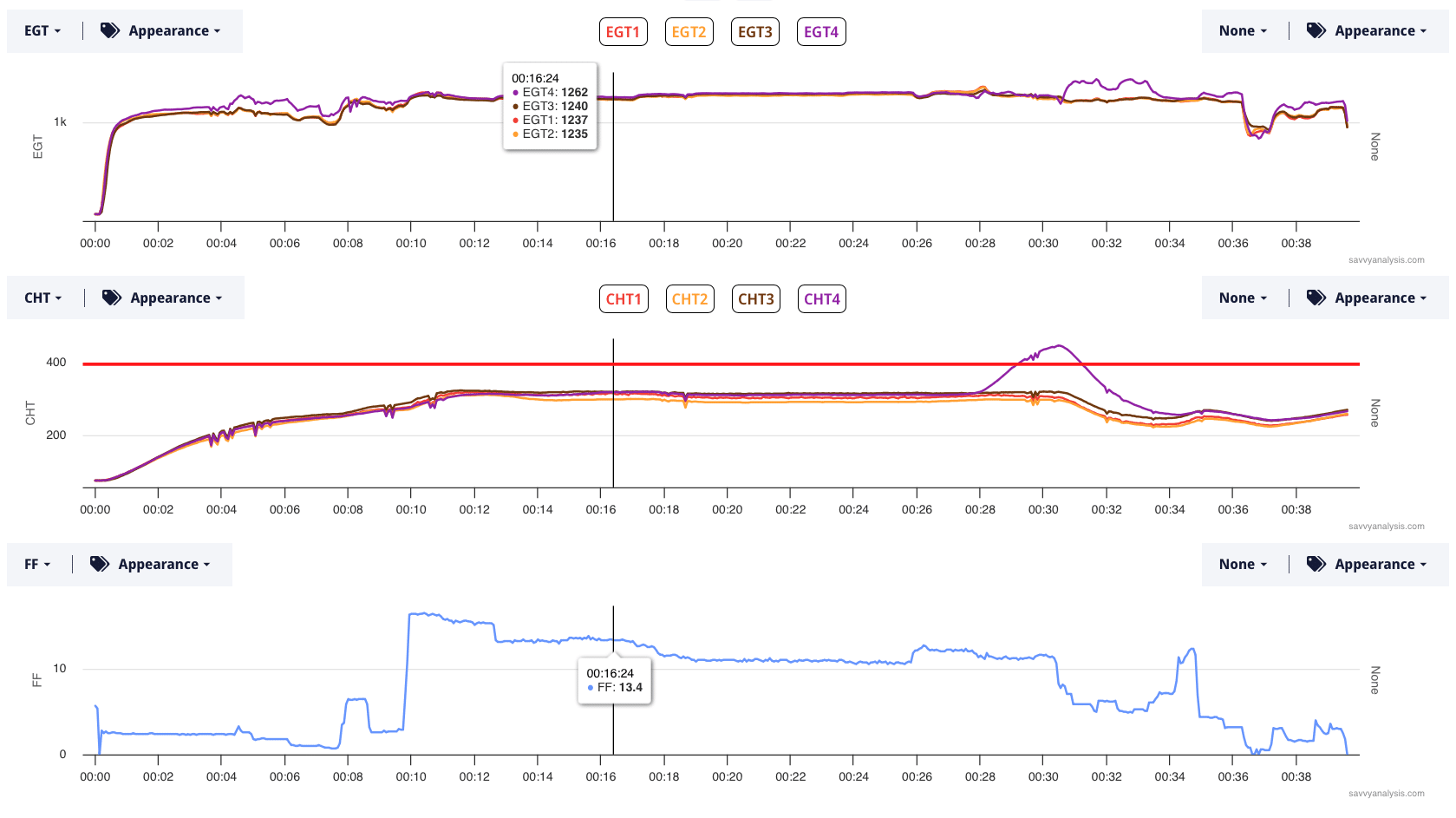
A quick overview of this 40 minute flight shows takeoff at the 10 minute mark, an uneventful, initial cruise, then what looks like a detonation event at the 28 minute mark. There’s a series of W-shaped glitches in the data at the 4, 5, 9, and 11 min marks. There’s a V- shaped mark at the 18 min mark. Interesting that those are in the EGT and CHT traces, but not the FF trace. And the glitches continue into and after the detonation event begins at the 28 minute mark.
With any mechanical malfunction, it’s natural to wonder if the pilot did something to cause or contribute to the problem, or did the data offer any indication that something was about to happen. In this case, EGT 4 starts out with the others then rises during the last half of the taxi out. Here’s the same flight zoomed into the startup, taxi out and preflight runup.
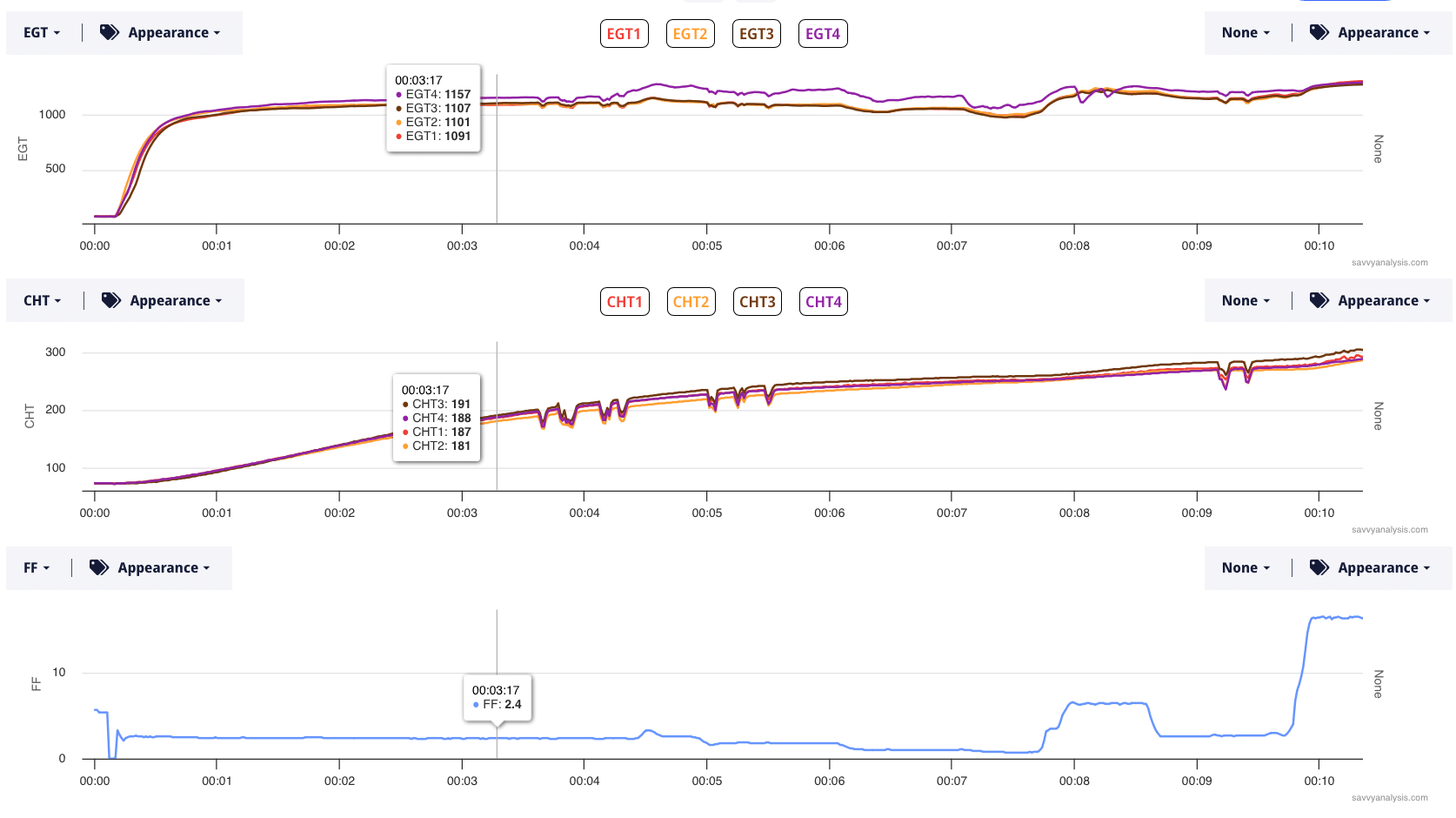
The mag check happens at the 8 minute mark and it looks like one of the plugs isn’t firing properly, but once the pilot makes the decision to go, EGT’s in climb out and initial cruise look great. Once the excursion takes place, the pilot leans the mixture and the CHT drops. We’ve seen other events where increasing FF brought the CHT back down. Which method you choose is going to depend on the available options, starting with your altitude above the ground.
Just to close the loop on the W- and V-shaped glitches, it doesn’t seem like there are any dots to connect with the detonation event. Those glitches look more like a connection issue. Since we’re not seeing the glitches in FF, it’s probably not a grounding issue, which we would expect to affect all the data going to the G3.
Next up is a Cessna 182P powered by a Texas Skyways O-550 and data from a JPI 800 with a 1 second sample rate. EGTs on top, with CHTs and FF below.
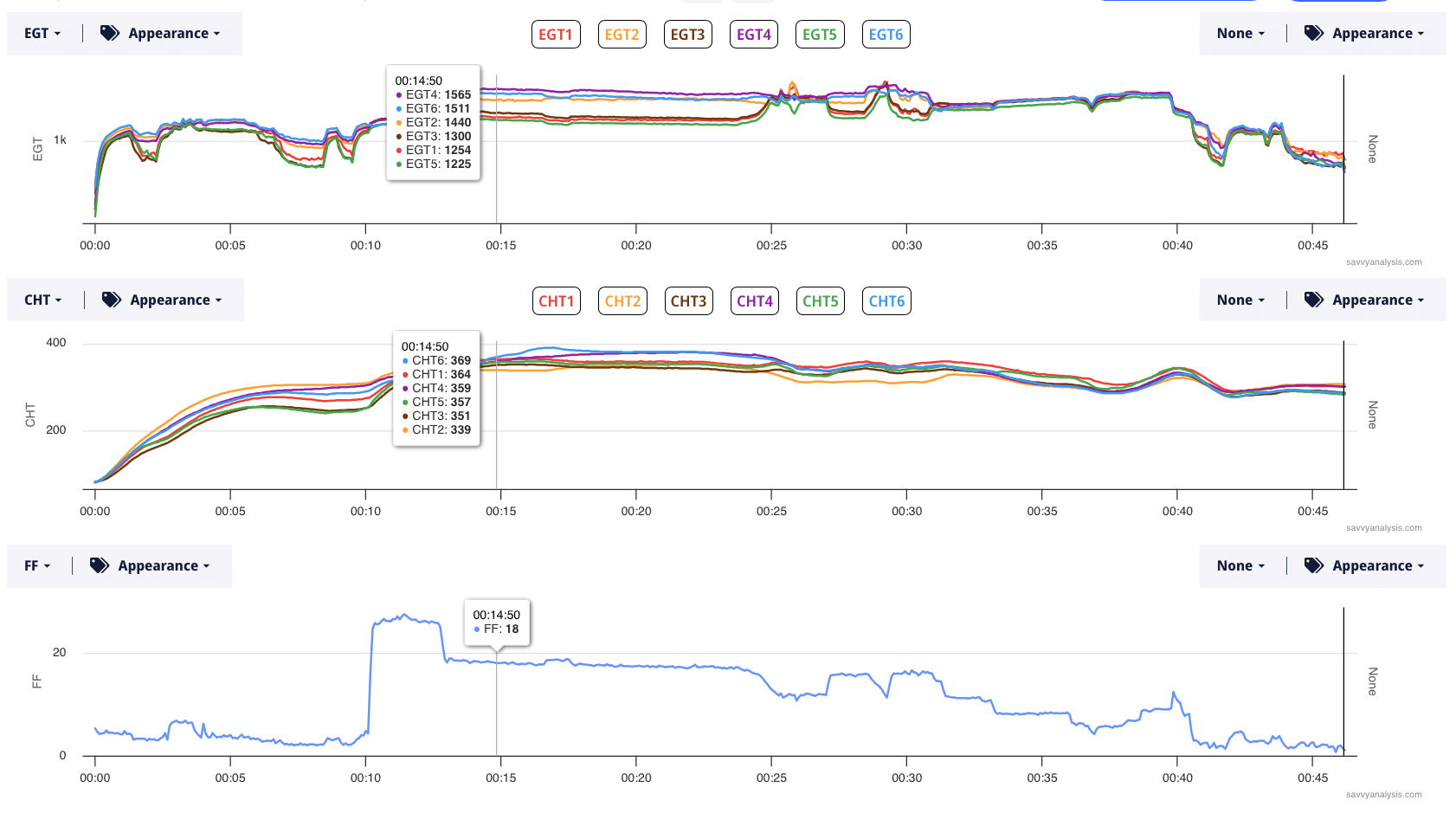
The usual suspect for a big gap in odd vs even EGTs is an induction leak. But, an induction leak is usually more prominent when MAP is low with a high ∆ between ambient pressure and manifold pressure. In this case, the gap is highest early in the flight when MAP is higher. It would help to depict MAP, and also carb heat to see what role it plays in this scenario, so here’s the same flight with those added. Carb heat is bold blue on the EGT rank and MAP is bold red on the FF rank.
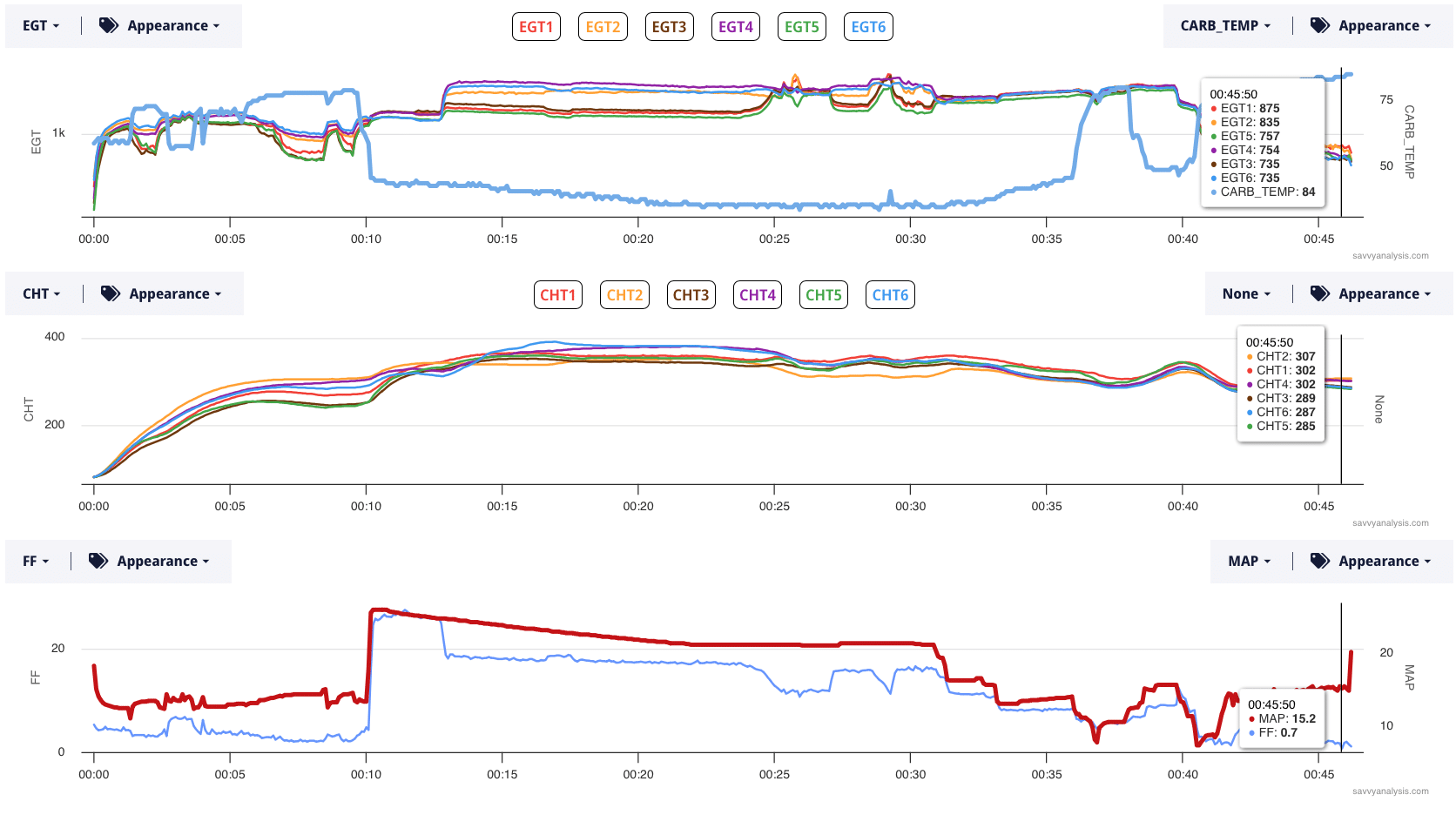
High MAP at idle is a symptom of an induction leak. Here MAP is normal at about 13″, and there’s no correction needed because this is not a high-altitude airport. Let’s examine the data. The first split in EGTs happens when carb heat is added just after engine start. There’s a pretty good correlation between the changes in carb heat and changes in EGT. Then carb heat goes off at the 10 min mark and stays off until 36 mins. So it’s hard to pin the EGT split at 12 mins on carb heat. Manifold pressure goes max at takeoff and dwindles at expected during climb. Hard to pin the EGT split on MAP.
There is a big FF change aligned with the EGT split. Then starting at about 24 mins, the pilot experiments with FF to try and get EGTs more uniform. It looks like there may have been a mag check or two during that time. When power is reduced at 32 mins, EGTs become more uniform again. There’s an interesting bit of data at the cursor. First that helps to know that the takeoff and the landing were made at the same airport. So elevation is not a factor in interpreting MAP, which is about 2″ higher at idle than it was at startup. We can be sure he’s idling – and not still taxiing – because FF is under 1 GPH there. Also note that carb heat is on.
Is it possible that this engine developed an induction leak during the flight? That’s what the MAP data suggests. But there’s enough ∆ in EGT during the inflight mag checks that we also recommend checking mag timing. That resulted in the L mag being replaced and all was well again. So it seems like the carb heat was responsible for the rise in MAP at shutdown.
We’ll finish this month with a Cozy Mark IV powered by a Lycoming IO-360 with data from a Garmin G3X with a 1 sec sample rate. EGTs on top, with CHTs and FF below. Cursor is off to the left out of the way.
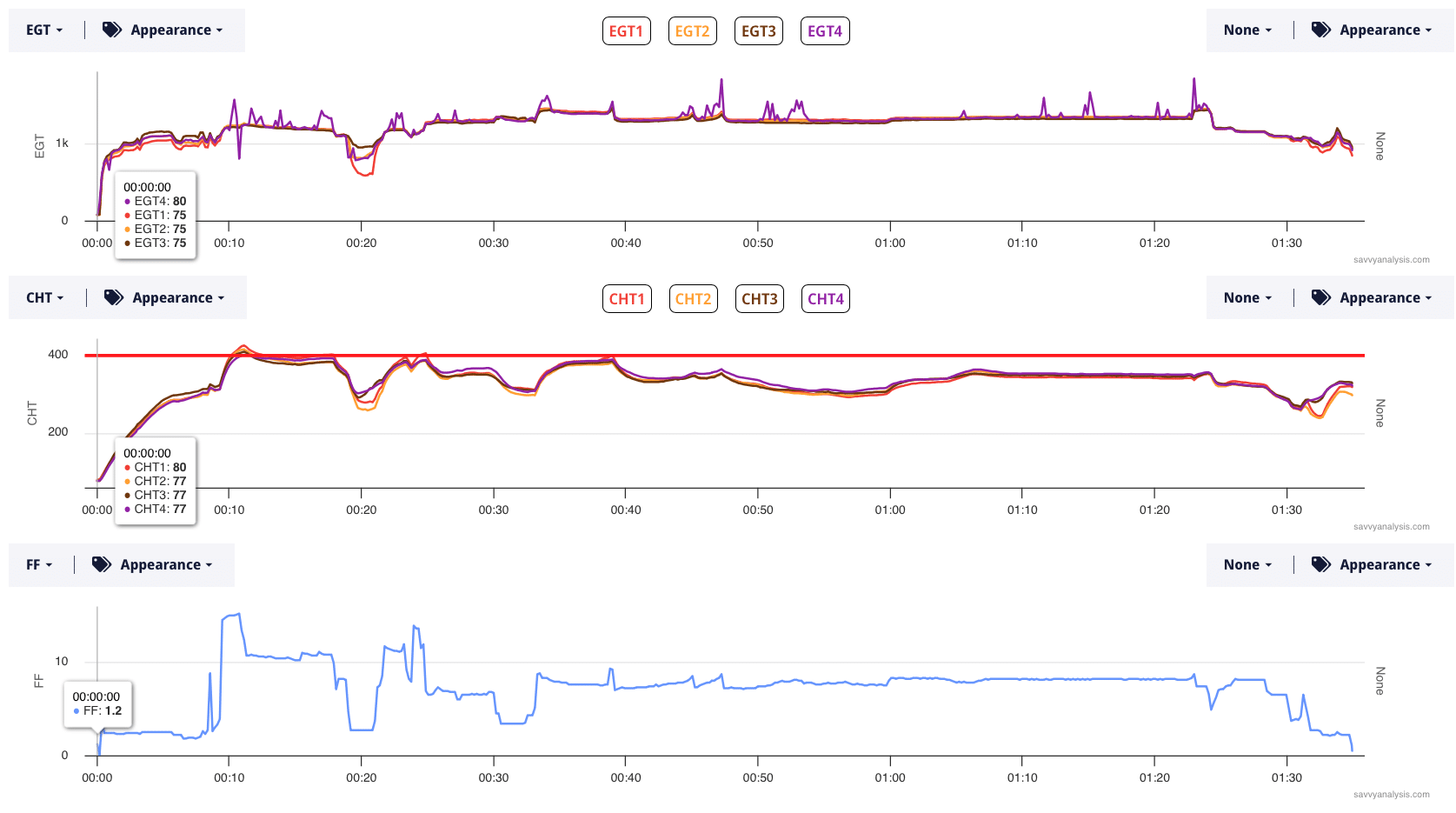
Something’s going on with EGT 4. Some of the spikes line up with changes in FF, others don’t. Here’s a screenshot of EGT 4, the other EGTs, and FF. Cursor is on one of the big spikes to 1845º.
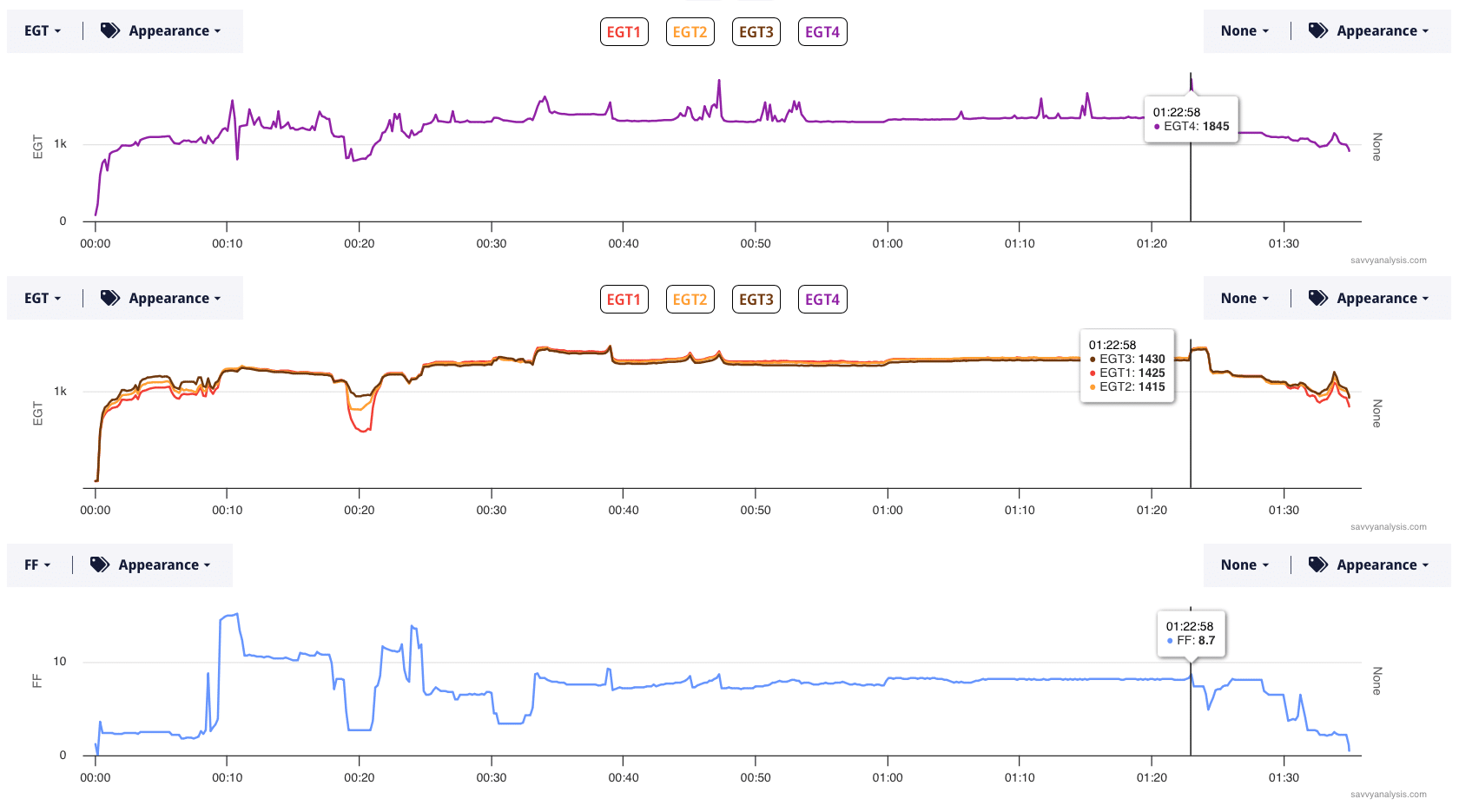
All but one of the spikes are to the upside. The down spike at the 11 min mark aligns with the mixture pull there.
These days we almost always ask about mag configuration. Even on certificated airplanes, standard mags are being STC’d with SureFly or ElectroAire or other E-mag systems. We always ask when it’s an experimental – and there’s almost always electronic ignition involved. That’s the case here – one standard and one early-model ElectroAire. The pilot reported some engine vibrations with the spikes in EGT – so it’s not as simple as a sensor going rogue.
In the end changing the sensor resolved the problems. Here’s a subsequent flight with a remarkable 10º EGT spread in cruise.
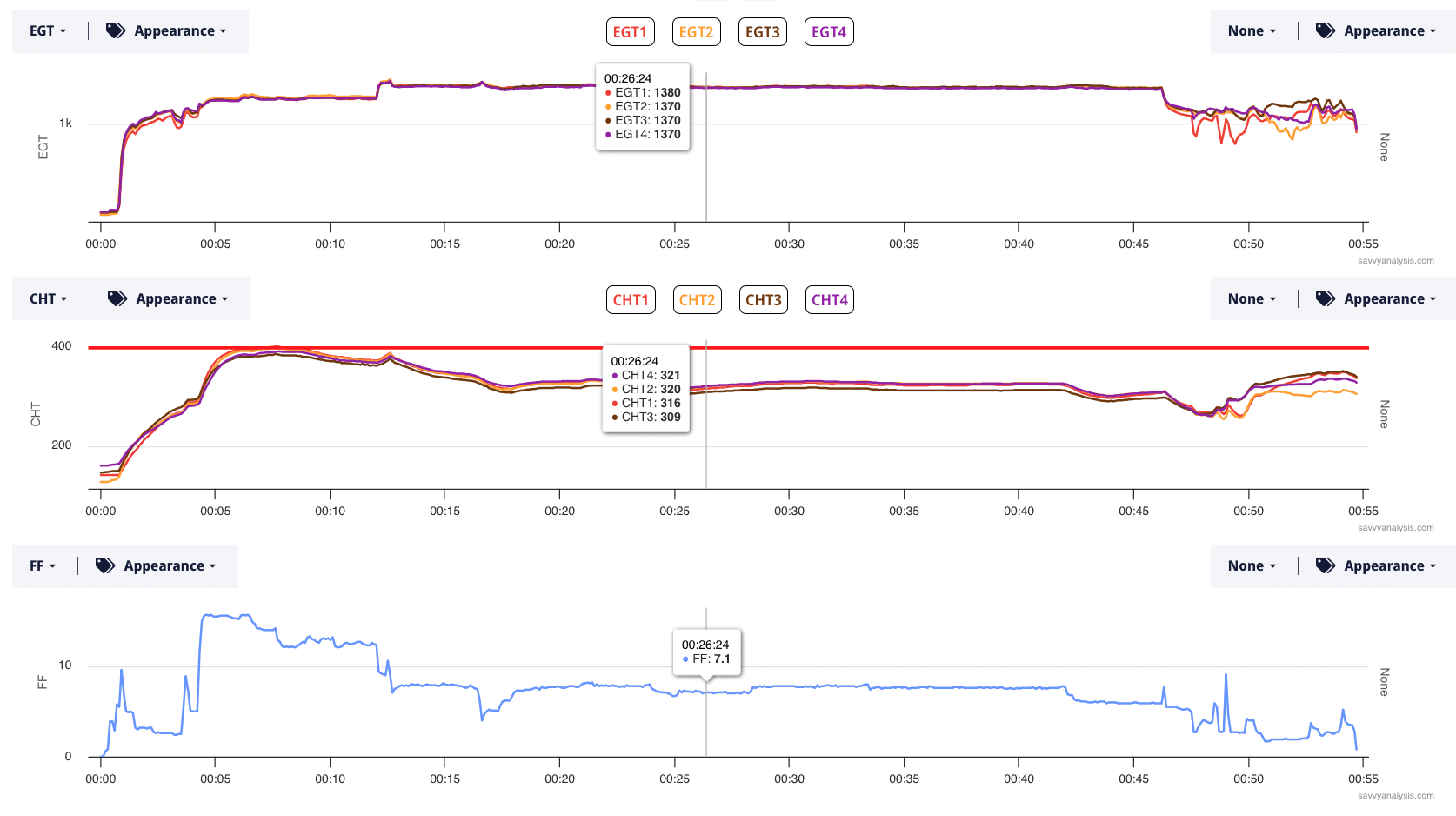
The best explanation we have for the vibrations is that the ElectroAire was responding to the spikes in EGT 4 by making small, ephemeral changes to the timing.
None of these scenarios seems to rise to the level of a “mayday”, or even an emergency declaration. Then again, we have the luxury of examining the data after the fact without a handful of airplane to fly. Help is there if you need it.